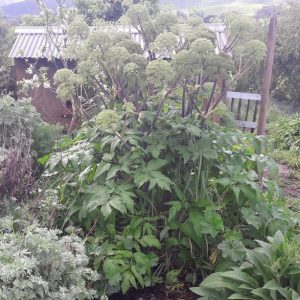LONG TERM OUT OF STOCK
SOLD OUT
OUT OF STOCK
AVAILABLE SPRING
AVAILABLE SUMMER
AVAILABLE AUTUMN
AVAILABLE WINTER
WINTER DORMANT
AVAILABLE SOON
Also known as Horse Parsley and Black Lovage, this is a robust plant in the carrot family, with hollow stems sporting shiny compound leaves from late winter, growing to a height of a metre or more, followed by tubular flower stalks topped by creamy-yellow umbelliferous flowers, to a height of 1.5 metres. Alexanders is a frost hardy culinary herb originating from continental Europe and used since ancient times, introduced to Britain by the Romans. (Some sources say the Romans brought it to use as fodder for their horses, and many sources concur that most stock enjoy it). It is still commonly found on the sites of medieval monastery gardens as a relic of former cultivation. We believe it’s time for a revival!
9cm pot.
Photos: Kahikatea Farm
As a biennial Alexanders produces leaves in the first year and then flowers and seed in the second, however we find it is dormant in summer (very sensible!) only to pop up again everywhere in Autumn. It self-seeds, becoming easily perennialised in a garden or food forest and providing good ground cover. It grows in full sun or almost full shade, on a wide range of soil types.
Alexanders is used as a bitter herb to aid digestion. In former times the juice was also used to clean wounds and to treat Vitamin C deficiency.
Primary Actions: Diuretic, Laxative, Nutritive
Parts Used: All



N.B. Shipping costs are added AFTER you have placed your order, you will then be emailed an invoice with bank details.

Smallest box rate:
This can fit up to 9 plants in 9cm pots.

Shipping a single tree can be expensive. We may be able to fit more in the box for the same price! See our shipping rates for single and multi tree boxes.

Combining sizes?
No problem, we will work out the best rate for you once you’ve placed your order.
Jo has a passion for growing herbs but is not a qualified herbalist and has no medical background.
We are lucky to have Patricia Beagle working here at times, who is qualified, and some of her advice does appear on these pages, but herbs act differently for different people and can interact with other medicines. We therefore always recommend that you consult with your own qualified health-care practitioner before using herbal products, particularly if you are pregnant, nursing or on any medications.
Kahikatea Farm cannot take any responsibility for any adverse effects from the use of the plants or a plant not having the effect it is reputed to have.
